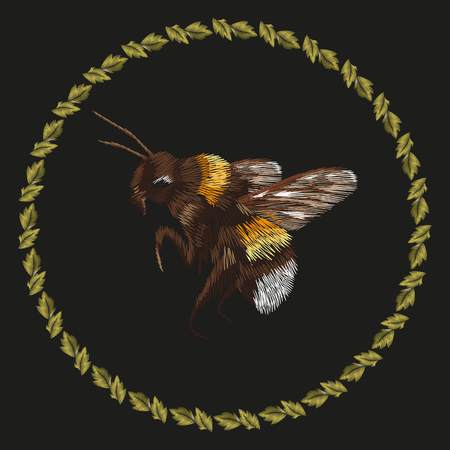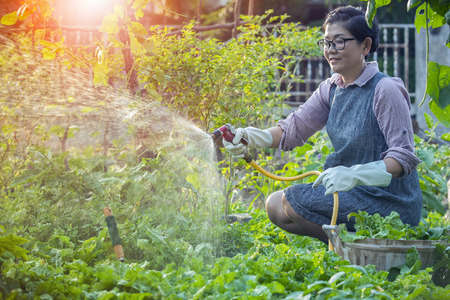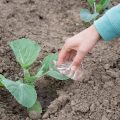1. Neglecting Native Plants
One of the most common mistakes when creating a pollinator garden is overlooking the importance of native plants. While exotic or ornamental flowers might look beautiful, they often don’t provide the nectar, pollen, or habitat that local pollinators—like bees, butterflies, and hummingbirds—need to thrive.
Why Native Plants Matter
Native plants have evolved alongside local pollinators over thousands of years. This means they bloom at the right time, offer the right kind of food, and create shelter for species that live in your area. Non-native plants might not bloom when pollinators need them most, and some hybrids bred for appearance may produce little to no nectar or pollen.
Common Problems with Non-Native Plants
| Issue | Impact on Pollinators |
|---|---|
| Lack of nectar/pollen | Pollinators cant find food and may avoid your garden |
| Mismatched bloom times | No food available when pollinators are active |
| No host plants for larvae | Caterpillars and larvae cant grow or survive |
How to Choose the Right Native Plants
The best way to support local pollinators is by planting flowers that are native to your region. A good starting point is checking with your local extension office, native plant society, or using online resources like the Xerces Society’s Plant Lists. Aim for a variety of plants that bloom from early spring through late fall so there’s always something in bloom.
Tips for Selecting Native Plants:
- Choose at least three different types of flowers for each season (spring, summer, fall)
- Include host plants for butterflies like milkweed for monarchs
- Avoid double-flowered varieties—they often lack nectar and pollen
- Group similar plants together in clumps to attract more pollinators
By prioritizing native plants in your pollinator garden, youre not just making your yard more vibrant—you’re also helping support biodiversity and a healthier ecosystem in your own backyard.
2. Overusing Pesticides and Herbicides
Applying chemicals in or around your pollinator garden can harm or kill the very creatures youre trying to attract—like bees, butterflies, and other beneficial insects. Many pesticides and herbicides contain ingredients that are toxic to pollinators, even in small amounts. While it might seem like a quick fix for pests or weeds, overusing these chemicals can do more harm than good.
Why It Matters
Pollinators are highly sensitive to chemical exposure. Bees, for example, can be killed outright by some insecticides or may suffer from disorientation, which affects their ability to return to the hive. Butterflies and moths can also be harmed during their vulnerable larval stages. Even “natural” or organic products can pose risks if not used properly.
Common Chemicals That Harm Pollinators
| Chemical Type | Common Ingredients | Effect on Pollinators |
|---|---|---|
| Pesticides (Insecticides) | Neonicotinoids (e.g., imidacloprid) | Toxic to bees; impairs navigation and reproduction |
| Pesticides (Fungicides) | Chlorothalonil | Disrupts bee gut health; weakens immunity |
| Herbicides | Glyphosate | Kills milkweed and other native plants needed by pollinators |
What You Can Do Instead
- Use manual methods: Hand-pull weeds instead of spraying them.
- Create natural pest barriers: Add companion plants that deter harmful insects without chemicals.
- Select pest-resistant native plants: These require fewer interventions to stay healthy.
- If you must use chemicals: Apply them early in the morning or late evening when pollinators are less active—and choose targeted treatments rather than broad-spectrum ones.
Avoid Spraying During Bloom Time
This is one of the most important tips. Spraying while flowers are blooming increases the chance of directly exposing pollinators. Always wait until blooms have faded, and avoid spraying open flowers at all costs.
Your Garden Can Thrive Without Harsh Chemicals
A healthy pollinator garden supports itself through biodiversity. When you reduce chemical use, you give nature a chance to create its own balance—with ladybugs eating aphids and birds feeding on caterpillars. Less spraying means more life buzzing around your garden, just like it should be.

3. Ignoring Bloom Diversity and Timing
One of the most common mistakes in building a pollinator garden is overlooking the importance of bloom diversity and timing. Many gardeners focus on planting their favorite flowers or those that look pretty during peak summer months, but this can leave critical gaps in nectar and pollen availability for pollinators throughout the year.
Why Timing Matters
Pollinators like bees, butterflies, and hummingbirds are active from early spring through late fall. If your garden only has plants that bloom in one season, pollinators may struggle to find food at other times. This can weaken local pollinator populations and reduce their ability to thrive and reproduce.
Plan for a Continuous Bloom
The goal is to have something blooming from early spring all the way to first frost. By choosing a mix of native plants with staggered bloom times, you ensure theres always a food source available. Heres a simple table showing examples of plants that bloom in different parts of the growing season:
| Season | Example Plants (U.S. Native) |
|---|---|
| Early Spring | Eastern Redbud, Wild Blue Phlox, Golden Alexanders |
| Summer | Bee Balm, Black-eyed Susan, Milkweed |
| Late Summer to Fall | Asters, Goldenrod, Blazing Star (Liatris) |
Tips for Success
- Diversify species: Include a variety of flower shapes and colors to attract different types of pollinators.
- Use native plants: They’re better adapted to local climates and more beneficial to native pollinators.
- Observe your garden: Take notes on bloom times each year to spot any gaps.
- Add overlapping blooms: Ensure there’s never a time when nothing is flowering.
Remember:
A well-planned bloom schedule not only supports pollinators but also keeps your garden looking vibrant for longer. Ignoring this step can mean fewer visits from bees and butterflies—and thats exactly what were trying to avoid in a pollinator-friendly space.
4. Improper Garden Location and Sunlight
Choosing the right spot for your pollinator garden is one of the most important steps in setting it up for success. Many people make the mistake of placing their garden in a shaded or low-traffic area of the yard, thinking it will be more protected or out of the way. However, this can actually limit its effectiveness.
Pollinators such as bees, butterflies, and hummingbirds are drawn to sunny, open spaces where flowers are easy to see and access. Most flowering plants that attract pollinators also need full sun—at least 6 hours of direct sunlight per day—to thrive and produce nectar and pollen.
If your garden is tucked away in a shady corner or behind tall trees or buildings, you might find fewer visits from pollinators. Also, if its far from other flowering plants or water sources, it could be harder for pollinators to discover and reach your space.
Ideal Conditions for a Pollinator Garden
| Condition | Recommendation |
|---|---|
| Sunlight | 6–8 hours of direct sunlight daily |
| Shelter from wind | Use shrubs or fences nearby (not blocking sun) |
| Visibility | Place near other flowering areas or open spaces |
| Accessibility | Avoid isolated spots; choose locations pollinators already visit |
Tips for Choosing the Best Spot
- Observe your yard throughout the day to find consistently sunny spots.
- Avoid planting under large trees or next to tall fences that block light.
- Consider building your garden close to patios or walkways where activity can help attract pollinators.
- If space is limited, even a sunny porch with container plants can support pollinators.
By placing your pollinator garden in a bright, welcoming location, youll help ensure it becomes a busy hub of buzzing and fluttering visitors all season long.
5. Failing to Provide Water and Shelter
When creating a pollinator garden, its easy to focus only on planting colorful flowers. But pollinators like bees, butterflies, and hummingbirds need more than just nectar—they also require clean water and safe shelter to thrive. Without these essential elements, your garden may not support the full life cycle of these beneficial creatures.
Why Water Matters
Pollinators need water for drinking and sometimes for cooling or building nests. A reliable source of clean, shallow water can make your garden a true haven for them. Here are some simple ways to provide water:
| Water Source | Description | Tips |
|---|---|---|
| Shallow Dish with Pebbles | A shallow container filled with water and small stones or marbles | Keep water level low so insects can land safely; change water regularly |
| Birdbath with Sloped Edge | Provides easy access for butterflies and bees | Add flat rocks to give pollinators a landing spot |
| Mud Puddle Area | Butterflies often seek out muddy spots for minerals | Create a damp area with compost-rich soil; keep it moist |
The Importance of Shelter
Shelter gives pollinators a place to rest, nest, and hide from predators or bad weather. Many native bees nest in the ground or inside dead wood. If your yard is too tidy, you might be removing the very spots they need.
Ways to Add Natural Shelter:
- Leave bare patches of soil: Many solitary bees dig tunnels in bare ground.
- Add dead wood or brush piles: These offer nesting sites for beetles and native bees.
- Grow dense shrubs or grasses: These provide cover and protection from wind.
- Avoid mulch everywhere: Too much mulch can block ground-nesting bees from digging in.
Pro Tip:
If youre unsure where to start, observe natural areas in your region. Notice how fallen logs, open soil, and puddles play a role in supporting wildlife—and try mimicking those features in your own garden.


